Former miners in Last Man Standing exhibition
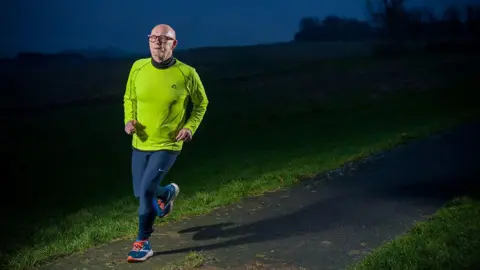 SimonHill HonFRPS
SimonHill HonFRPSA photography exhibition has recorded some of the last surviving former miners at three coalfields.
Last Man Standing is on show at Easington Social Welfare Centre in County Durham.
North East photographer and gallery owner Russell Smith said the project was born from a chance conversation about the many miners who had died young.
"When you've got guys passing away at 50, 35, or 60, we've got an ever diminishing pool of experience and stories," he said.
Mr Smith said woman who visited one of his galleries sent him an old NCB (National Coal Board) donkey jacket and a letter detailing her miner father's death at 50.
This inspired him to create a community project, as part of an MA at the Northern School of Art, looking at the remaining miners from the Blackhall, Horden and Easington collieries in East Durham, which closed in the 80s and early 90s.
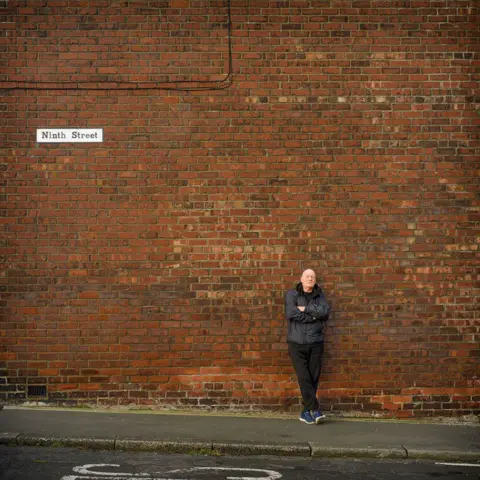 Simon Hill HonFRPS
Simon Hill HonFRPSMr Smith planned to enlist ten men from each village, film them, take their portrait, and make a documentary.
But many former miners had already died and he faced huge reticence from those remaining, he said.
Some replied to say it had been the "worst time I ever had, I don't want to talk about it, the strike cost me my marriage, not interested", he said.
He eventually found five men from each village.
"I've learnt so much in the last six months about how parochial these places still are," he said.
"So, even though there's a mile from Easington to Horden, they don't talk.
"They'll have relatives there, but it might as well be from Germany to France."
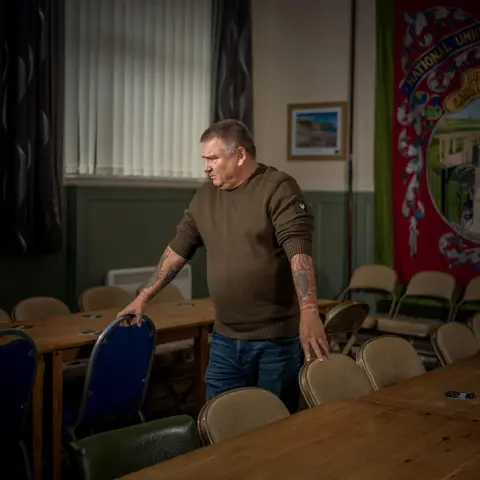 Simon Hill HonFRPS
Simon Hill HonFRPSThere followed another chance encounter, with professional editorial photographer and president of the Royal Photographic Society, Simon Hill.
Coming from a former mining community himself, he said he was "passionate about recording people and people's lives" and agreed to take portraits of the men - for free.
"Russell was very open to me doing the portraits in a very contemporary style rather than formal portraits," he said.
"Which is right up my street really- so I just couldn't resist the job."
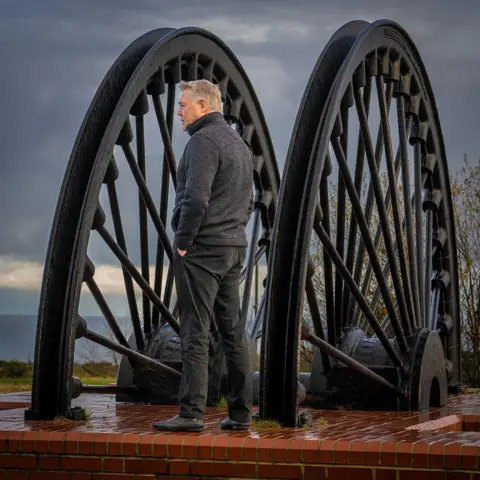 Simon Hill HonFRPS
Simon Hill HonFRPSWanting to spend time "breaking the ice" and putting his subjects at ease to get the best pictures, Mr Hill planned to take three portraits a day.
"Some of them were very, very cagey about having their photograph taken or even talking about their life in mining - they took a little bit longer," he said.
"I'd much rather spend the time and get the shot than rush it through and just grab a likeness of somebody.
"I needed more character in the photograph."
Mr Hill had recently been commissioned by Warner Bros to take portraits of Kindertransport survivors in their 80s and 90s reflected in the film One Life, to be shown at the National Portrait Gallery.
He had three-and-a-half minutes with each, so the miners' project "was like a walk in the park by comparison", he said.
 Simon Hill HonFRPS
Simon Hill HonFRPSMany miners followed their fathers, uncles, brothers and friends down the mines, despite the many pit disasters, Mr Smith explained.
One man included in the exhibition was begged by his mother not to, he said.
"All his friends are mining in Blackhall, his mother's adamant that she doesn't want him to go to the pit because she's lost her husband aged 33 down that mine, and he still went," he said.
"Every pit has some kind of tragedy, they've all got one, and Easington's was terrible, still remembered, yet they all went down."
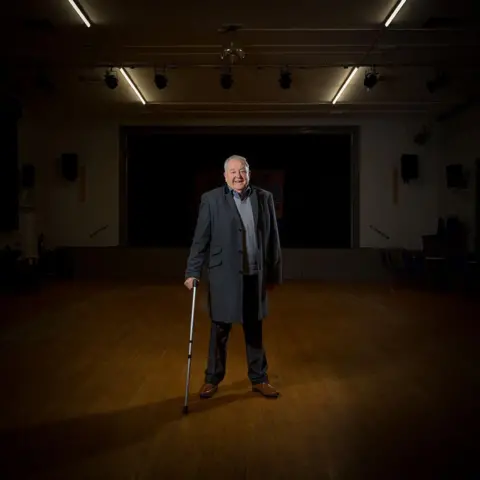 Simon Hill HonFRPS
Simon Hill HonFRPS The exhibition also reflects what happened to the pit villages after the mines closed.
"There was no Plan B," Mr Smith said.
"The government shut a major employer where you could have 2,000 people working in a village and there's nothing there to replace it."
The resulting decline as shops and services closed left "a ghost town where nobody does go out because there's nowhere to go", he said.
Mr Smith has assigned copyright of the photographs to the social club so any profits can help it stay open.
He then hopes to set up an annual arts festival for the three villages, to which local people can submit photographs and art works.
Follow BBC North East on X (formerly Twitter), Facebook and Instagram. Send your story ideas to [email protected].
